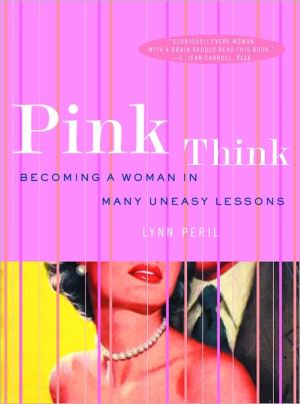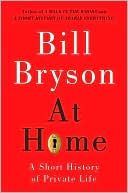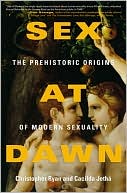Pink Think: Becoming a Woman in Many Uneasy Lessons
From board games to beauty pageants, a smart, witty, pop-culture history of the perilous path to achieving the feminine ideal.\ Deluged by persuasive advertisements and meticulous (though often misguided) advice experts, women from the 1940s to the 1970s were coaxed to "think pink" when they thought of what it meant to be a woman. Attaining feminine perfection meant conforming to a mythical standard, one that would come wrapped in an adorable pink package, if those cunning marketers were to...
Search in google:
From board games to beauty pageants, a smart, witty, pop-culture history of the perilous path to achieving the feminine ideal. Publishers Weekly Books titled How to Fascinate Men and How to Help Your Husband Get Ahead. Hope chests. Home economics courses at the college level. Ah, womanhood. Peril, founder of the zine Mystery Date, devoted to her obsession with old etiquette and self-help books, analyzes these and other marvels in her first book. "Pink think" is "a set of ideas and attitudes about what constitutes proper female behavior," she says, and it "assumes there is a standard of behavior to which all women... must aspire." In casual, friendly language, Peril who shares tales of her own childhood pink think rebellion charts the amusing yet sad history of how women have been conditioned with a set of rules that often begins with someone telling them little girls are made of "sugar and spice and everything nice." A pop culture history of achieving the feminine ideal, the book explores everything from childhood and adolescence to marriage and the workplace. Spurred on by the "Patron Saint of Pink Think," Jayne Mansfield, pink think infiltrated frighteningly numerous aspects of women's lives from the 1940s through the '70s and was often driven by advertisements pitching girls' versions of house-cleaning supplies and feminine hygiene products that counseled women to douche regularly in order to ensure a happy marriage. In an afterword, Peril expresses her dismay at the apparent preservation of pink think today (witness the success of 1995's The Rules and 2001's The Surrendered Wife). Although her book may leave some women thinking, "OK, we've ditched the maternity girdles so now what?" it's hilariously entertaining. B&w and color illus. (Oct. 7) Copyright 2002 Cahners Business Information.
AcknowledgmentsPink Think 101: An Introduction3Ch. 1Kiddie Pink25Ch. 2Adolescence: The Magic Years of Pink43Ch. 3I Am Curious Pink: Teen Guides to Flinging the Woo77Ch. 4Something Old, Something New, Something Borrowed, Something...Pink: Weddings, Marriage, and, Heaven Forbid, the Single Girl103Ch. 5A Manly Shade of Pink: A Brief Guide to the Other Side133Ch. 6Pink 'n' Pretty: The World of Charm and Beauty163Ch. 7Working Girl's Pink193Afterword: Pink Redux213Notes219Bibliography229Permissions/Illustration Credits233
\ From Barnes & NobleEven as a child, Lynn Peril was fascinated by those pop culture primers that instructed young girls on the perilous art of becoming a woman. These feel-good manuals offered Cold War teenagers sprightly advice on dating do's & don'ts, proper party behavior, and, even the mysterious (and slightly scary) world of feminine hygiene. This high ideal of young feminine behavior, which the author calls "pink think," guided girls from grammar school playtime to going steady to marriage and the workplace. In this insightful and often witty study, Peril spotlights prominent pink thinkers such as Barbie and Jayne Mansfield.\ \ \ \ \ Publishers WeeklyBooks titled How to Fascinate Men and How to Help Your Husband Get Ahead. Hope chests. Home economics courses at the college level. Ah, womanhood. Peril, founder of the zine Mystery Date, devoted to her obsession with old etiquette and self-help books, analyzes these and other marvels in her first book. "Pink think" is "a set of ideas and attitudes about what constitutes proper female behavior," she says, and it "assumes there is a standard of behavior to which all women... must aspire." In casual, friendly language, Peril who shares tales of her own childhood pink think rebellion charts the amusing yet sad history of how women have been conditioned with a set of rules that often begins with someone telling them little girls are made of "sugar and spice and everything nice." A pop culture history of achieving the feminine ideal, the book explores everything from childhood and adolescence to marriage and the workplace. Spurred on by the "Patron Saint of Pink Think," Jayne Mansfield, pink think infiltrated frighteningly numerous aspects of women's lives from the 1940s through the '70s and was often driven by advertisements pitching girls' versions of house-cleaning supplies and feminine hygiene products that counseled women to douche regularly in order to ensure a happy marriage. In an afterword, Peril expresses her dismay at the apparent preservation of pink think today (witness the success of 1995's The Rules and 2001's The Surrendered Wife). Although her book may leave some women thinking, "OK, we've ditched the maternity girdles so now what?" it's hilariously entertaining. B&w and color illus. (Oct. 7) Copyright 2002 Cahners Business Information.\ \ \ Library JournalFrom freshmen beanies, dress codes, and strict college rules to sex education, husband hunting, graduation, and beyond, Peril (Pink Think), founding editor of the Internet magazine Mystery Date, has written a witty, nostalgic retrospective about a cultural icon-the 20th-century college girl. Beginning with an overview of the development of higher education for women, Peril tells a story that includes the life of the new girl on campus, the collegiate look women strove for, the strict campus rules by which they lived, their courses of study (whether the development of intellect or essential domestic skills), and life after college. Combining women's history with a study of popular culture, Peril identifies and examines the sexualized dual vision of the college girl as both four-eyed geek and campus sex kitten. While the majority (58 percent) of college graduates today are women, ambivalence about educational equity endures. Interspersed with vivid photos, as well as examples of advertisements, pamphlets, and posters, this fun, informative, and insightful read is recommended for public and academic libraries.-Elizabeth M. Wavle, Elmira Coll. Lib., NY Copyright 2006 Reed Business Information.\ \ \ \ \ Kirkus ReviewsA witty, acerbic, and, for those women who grew up in the mid-20th century, painful review of the social and marketplace pressures that reduced women to "soft, delicate, nurturing beings made of 'sugar and spice and everything nice.' " First-time author Peril (editor of the online 'zine Mystery Date) is devoted to collecting what she calls "femorabilia": books, magazines, board games, and other products that reflect attitudes about women and their roles in the decades following WWII through the 1970s. Pink was the color of the truly feminine girl, she reminds us, and it showed up not only in the wardrobes of Jayne Mansfield and Barbie, but in such unlikely products as a pink Lady Lionel toy locomotive. Other examples Peril offers of how the powers-that-be "helped" women enhance their femininity include advice on menstruation from a Catholic priest. A truly feminine woman, said the cultural authorities, was well-groomed, attractive, interesting (but not more interesting than the man at her side), and above all "charming," all in the service of netting a husband. Those pitiable souls unable to land a man were living in "an abnormal state," according to some experts, and were steered to such female-appropriate careers as home economics and telephone operator. Peril also devotes a chapter to "blue think," the counsel offered to boys and young men, who carried the heavy burden of being the "symbol of family continuity, high success, and national security." The plethora of tips on keeping that hard-won husband ranged from a 1948 ad promoting feminine hygiene products for "continual marital congeniality" to Marabel Morgan's 1975 paean to submissiveness, The Total Woman. By then, of course,feminism's second wave was well-launched, and Morgan's book was merely a holding action. Or was it? The recent spate of women-as-doormat books-The Rules, for instance-and the incidence of anorexia suggest otherwise. Both amusing and dismaying. (8 pages color, 45 b&w illustrations, some not seen)\ \








